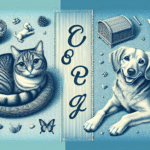Safe, Fun, and Prepared: The Ultimate Guide to Halloween Pet Costumes and Seasonal Safety
Halloween means different things to different people—thrilling decorations, scary movie marathons, and yes, mountains of candy. But for many of us, the best part is dressing up and seeing the delight on everyone’s faces when a fantastic costume enters the room. This year, why not let your pet share in the fun—safely? Thoughtfully chosen costumes can be adorable and comfortable for many pets, and with a little planning, you can enjoy the festivities without stress.
Safety comes first. Halloween is also one of the riskiest nights of the year for pets—there’s an 11% increase in lost pets on Halloween. From properly fitting costumes and hazard-proofing your home to microchip registration and smart ID practices, a little prep goes a long way. And because fall ushers in colder weather and storm season for many regions, we’ll also cover winter safety tips and emergency preparedness so your pet stays safe and healthy long after the last candy wrapper is thrown away.
Use this complete, practical guide to pick the best and safest Halloween costumes for pets, prepare your home and neighborhood outing, and get set for the colder months and any emergencies that might come your way.
Should Your Pet Wear a Costume? Read Their Cues First
Not every pet enjoys wearing clothing—and that’s okay. The goal is fun, not stress. Some pets will happily strut in a costume, while others will freeze, paw at the outfit, or try to wriggle out of it. If your pet seems distressed, remove the costume immediately and try something simpler (like a festive collar, a bandana, or a lightweight accessory).
- Look for signs of discomfort: pinned ears, tucked tail, frozen posture, frantic pawing, lip licking, avoiding you, or excessive scratching at the costume.
- Start small: try a lightweight accessory to gauge tolerance before moving to a full outfit.
- Make it positive: pair try-ons with praise and treats so your pet associates the costume with good things.
- Respect personality and history: anxious or noise-sensitive pets may be better off celebrating in a quiet room with enrichment toys and no costume at all.
Costume Safety Rules That Always Apply
When your pet enjoys dress-up, stick to safety-first principles to keep the evening cute and incident-free.
- Keep vision, hearing, and movement free: avoid masks or headgear that cover eyes or ears, and skip designs that restrict normal walking, sitting, or turning.
- Mind the mouth and nose: nothing should block breathing or panting, and avoid tight chin straps that press on the throat.
- Skip small, chewable pieces: buttons, beads, bells, and glued-on gems can become choking hazards if chewed off.
- Choose soft, breathable fabrics: lightweight materials and mesh panels keep pets cooler and more comfortable.
- Secure but not tight: fastenings should stay put without digging in. You should be able to slide two fingers between the costume and your pet’s body.
- Never leave pets unsupervised in costume: watch for snagging, overheating, or panic.
- Keep collars and ID tags on: they may not match the outfit, but they’re the most important accessory—especially on a high-traffic night like Halloween.
- Use reflective accents for night walks: add reflective tape or choose costumes with reflective trim for visibility.
- Do a test run before the big night: let your pet wear the costume for short, positive sessions to make sure it fits and feels good.
- Hydrate and cool down: if it’s warm indoors with lots of people, watch for panting and provide water and breaks out of the costume.
Fit and Comfort: Getting the Sizing Right
A well-fitting costume makes all the difference between “adorable” and “uh-oh.” Measure carefully and try things on early so you have time to exchange sizes if needed.
- Measure neck, chest, and length: most costumes size by girth (around the widest part of the chest). Compare to the brand’s size chart.
- Account for fur: long-haired pets may need a roomier fit; short-coated pets often prefer soft, fleecy fabrics against the skin.
- Check movement: have your pet sit, stand, walk, and turn in the costume. Watch for rubbing in the armpits or around the thighs.
- Use a harness under or through the costume: if your pet will be on-leash, thread the leash to a secure harness point. For cats, use a properly fitted harness and breakaway collar for ID.
- Mind the weight: bulky or heavy pieces get uncomfortable fast. Lightweight designs are best for longer wear.
How to Acclimate Your Pet to a Costume
Even costume-friendly pets appreciate a gradual introduction. Use treats to create positive associations and keep sessions short.
- Step 1: show the costume, let your pet sniff it, and reward with treats.
- Step 2: place part of the costume on for a few seconds, remove, reward, and repeat.
- Step 3: gradually build to wearing the full costume for a minute or two, then longer as your pet stays relaxed.
- Step 4: practice walking, sitting, and navigating doorways while wearing it.
How Much Do Pet Costumes Cost?
Pet costumes typically range from about $5 to $40 before taxes and shipping, depending on complexity, brand, and materials. Simple accessories (like hats or bandanas) tend to cost less, while full-body outfits and licensed characters cost more. You can save by shopping early, buying secondhand, or going the DIY route with safe, lightweight materials you already have at home.
Best Halloween Costumes for Dogs
These crowd-pleasers balance fun and function. Always choose the size that lets your pup move and breathe comfortably—and do a test walk to make sure nothing shifts or rubs.
- Your Local UPS Driver: We’re partial to costumes that make dogs look like tiny humans standing upright—too cute. A UPS driver outfit always gets laughs and recognition. Shop this style.
- Dog Wig: Low effort, high impact. A wig can be hilarious and comfortable, especially for pets who dislike body coverings. See options.
- Freddy Krueger: For a spooky vibe, a Freddy-themed outfit brings classic horror fun—as long as it doesn’t include small, chewable parts. Explore here.
- Ghostbuster: Who you gonna call? Your super-sensed pup makes a perfect paranormal pro. Look for lightweight packs and reflective trim. Find it here.
- Shrek: Sometimes all you need are signature ears and a vest for instant recognition. Keep headpieces loose and ears unobstructed. Browse Shrek styles.
Not costume fans? Try a festive bandana, a reflective collar charm, or a themed harness. You’ll get the Halloween look without the full outfit commitment.
Best Halloween Costumes for Cats
Cats are often happiest in minimal, lightweight looks—think simple accessories that don’t restrict movement or cover the face.
- Bat Wings: The perfect combo of spooky and simple. They attach lightly and preserve full range of motion. Try bat wings.
- Lion Mane: Let your house panther go full “big cat.” Choose soft, adjustable headpieces to avoid pressure on ears and chin. See lion manes.
- Pumpkin: A classic that’s cute without being cumbersome. Look for sleeveless styles that won’t snag claws. Explore pumpkin looks.
- Vam-purr: Cats and vampires have a lot in common—mysterious and nocturnal. Keep capes short and lightweight. Shop vampire looks.
With cats, keep sessions very short, and never force a costume. A themed collar with a breakaway buckle and ID is often the safest, easiest choice.
DIY and Budget-Friendly Costume Ideas
You don’t need a big budget to create a winning look. When in doubt, simple is best—minimal coverage, no small pieces, and soft fabrics.
- Bandana upgrades: Add iron-on patches or fabric paint for a ghost, pumpkin, or “security guard” theme.
- Collar charms: Use lightweight, reflective tags with Halloween designs. Avoid anything that dangles too low.
- Harness overlays: A felt “cape” or lightweight vest that attaches at the harness points keeps the leash secure and the look in place.
- Reuse baby tees: A soft infant T-shirt can be a comfy base layer. Cut to avoid tightness and remove any buttons.
- Reflective tape accents: Add visibility to dark costumes with reflectors for nighttime walks.
- Pet-safe face flair: Skip dyes or makeup. If you add color, choose a pet-safe product recommended by your veterinarian.
Trick-or-Treat Night: A Safety Checklist
Between open doors, shrieking decorations, and costumed strangers, Halloween is sensory overload for many pets. A few smart steps keep the night safe and calm.
- Choose the right plan: if your pet is easily stressed, set up a quiet, closed “safe room” with a bed, water, and a food puzzle during peak hours.
- Manage the door: use baby gates or keep pets leashed when opening to trick-or-treaters to prevent bolting.
- Secure ID: collars and tags on, microchip registered and updated. If your pet slips out, you’ll be glad you planned ahead.
- Keep candy out of reach: chocolate, sugar-free gum (xylitol), raisins, and candy wrappers are all hazards. Show guests where to set candy bowls safely.
- Decoration safety: keep cords, string lights, and fake cobwebs off the floor. Avoid glow sticks—many contain bitter agents that can upset stomachs if punctured.
- Flame-free candles: use LED candles in pumpkins and decor to avoid burns and fire risk.
- Leash and harness checks: ensure a snug, escape-resistant fit (especially for cats) before any outdoor walk.
- Stick to familiar routes: avoid crowded sidewalks and overwhelming displays if your pet startles easily.
- Mind the weather: if it’s chilly, consider a lightweight coat or sweater beneath or instead of a costume.
- Plan for breaks: give costume-free breathers, water, and a quiet space to decompress.
- Supervise costumes: never leave a dressed pet alone, and remove outfits at the first sign of stress.
Preventing Lost Pets on Halloween (and What to Do If It Happens)
With an 11% increase in lost pets on Halloween, taking ID seriously is essential. Collars and tags can fall off, which is why microchips are a critical backup—but microchips are only as effective as the information linked to them.
- Confirm your microchip registration: if your pet has a chip, verify that your phone number and address are current. You can register or update your pet’s microchip for free.
- Keep tags on—always: make sure your pet wears a collar with a legible ID tag on Halloween night (and every day). Include a phone number where you’re reachable.
- Consider enhanced protection: services like the Lifetime Protection Membership from 24Petwatch can help streamline reunions through a large pet recovery network.
- If your pet goes missing: act fast. Alert local shelters, veterinarians, and microchip registries; search your neighborhood; post clear photos and last-seen details on community pages. Use this step-by-step guide: What to do if your pet is lost.
Pro tip: take current photos of your pet before Halloween, including close-ups and full-body shots without a costume. If your pet bolts, you’ll have recent images ready for flyers and online posts.
Fall and Winter Safety Essentials
As temperatures dip, cold-weather risks emerge—especially for very young, elderly, small, or short-haired pets. Keep these guidelines in mind throughout the colder months.
- Limit time outdoors: dogs and cats are generally safer indoors, except for supervised outings. Short-coated, young, or senior pets should never be left outside unsupervised in cold weather.
- Dress for the weather: consider a sweater or jacket for short-coated or smaller dogs on chilly walks. This dog jacket guide can help with fit and material choices.
- Fuel their furnace: outdoor time in the cold burns more calories. Talk with your vet about adjusting portions, and see how to calculate your dog’s daily calorie needs.
- Water stays fresh—no metal bowls: check dishes often to prevent freezing and choose plastic bowls so tongues don’t stick in freezing temps.
- Watch the paws: salt and de-icers can irritate paw pads and cause stomach upset if licked. Wipe paws after walks and consider pet-safe ice melt and booties.
- Beware antifreeze: it’s sweet-tasting and deadly. Clean up spills immediately and store chemicals safely. Consider less-toxic propylene glycol products.
- Give the car hood a knock: cats and small wildlife may sleep on warm engines; bang the hood before starting your car.
- Wind chill is real: even when the temperature seems manageable, wind can dangerously lower a pet’s tolerance.
- If your dog lives partly outdoors: provide a dry, draft-free doghouse just big enough to hold body heat, raised off the ground with straw or cedar shavings. Face the doorway away from the wind and cover it with waterproof burlap or heavy plastic.
- Help community cats: if you care for homeless cats, set up insulated shelters and provide unfrozen water and regular food.
- Yard hazards change with the season: mushrooms, compost, and certain plants become risks in fall. Review common dangers: Fall yard hazards for pets.
Emergency and Disaster Readiness (Hurricanes and More)
Storms, wildfires, and evacuations can happen with little warning. Preparing now ensures your pet can evacuate safely with you and stay healthy wherever you shelter.
Build a pet go-bag and keep it ready: store items in a sturdy, waterproof container you can grab and go.
- Dogs and cats: veterinarian contact info; copies of vaccination records; medications; extra collar and leash; food and water bowls; bottled water; toys and treats; paper towels; waste bags; muzzle if needed; first aid kit; a current photo; a 5-day supply of food (plus can opener if needed); kitty litter and a small travel box for cats.
- Snakes: several pillowcases for secure transport, a heating pad, and a water bowl.
- Small mammals: bedding, food, a food dish, and a water bottle in a secure travel carrier.
- Birds: a carrier with a perch inside, food, and a water mister.
Must-haves for every species:
- Pet travel carrier: get one in advance (they sell out fast before evacuations). It should be secure, covered, and large enough for your pet to turn around completely. Label it with your contact info and an alternate contact outside the danger area.
- Proper identification: a well-fitted collar with up-to-date ID and rabies tags, plus a microchip with current information. Add a phone number reachable outside your local area. If needed, register your pet’s microchip for free.
- Health records and medications: boarding facilities and many shelters require proof of immunizations to keep all animals safe.
Plan your evacuation now:
- Choose destinations in advance: identify pet-friendly hotels, friends or family outside the risk zone, and boarding options. Confirm policies ahead of time and keep a list of contacts in your go-bag.
- Know your region’s resources: check your state or local animal services and SPCA for any pet-friendly shelters (best used as a last resort). You’ll typically be responsible for your pet’s care while there.
- Verify boarding plans if you travel: ask your boarding facility about their evacuation procedures. Don’t assume you’ll be able to return quickly after a disaster.
- Practice carrier time: ensure your pet is comfortable going into and resting in their carrier long before you need it.
Disaster don’ts: don’t leave your pet behind, don’t rely on authorities to evacuate your animal for you, and don’t leave pets tied outdoors or unattended in the path of flooding or high winds. Your best plan is always to evacuate with your pet.
After the event, your home and routine may feel different for a while. Be patient, keep routines predictable, and watch for stress-related behaviors. If issues persist, consult your veterinarian.
Healthy Halloween Treats and What to Avoid
It’s tempting to share holiday snacks, but many human treats are dangerous for pets. Chocolate, sugar-free candies with xylitol, raisins, macadamia nuts, and alcohol are all off-limits. Keep candy bowls high and trash sealed. If you want to treat your pet, choose themed pet-safe snacks or bake simple, vet-approved goodies. For more guidance, see Halloween dog and cat treats.
Adoption Season: Find Your Perfect Match
If Halloween fun has you dreaming of a new furry friend, make adoption part of your fall plans. A little research ensures the perfect match for your lifestyle and home.
- Browse adoptable pets: search shelters and rescues near you to meet pets who need a loving home. Search adoptable pets.
- Visit the shelter: talk with staff about a pet’s temperament, energy level, and medical history to make an informed choice.
- Prepare your home: use this comprehensive adoption checklist to gather supplies, pet-proof, and plan your first week.
Smart Support: Insurance, Tags, and Pet Tech
Good planning covers both the fun and the unexpected. A few smart tools can help you navigate illness or emergencies and reunite quickly if your pet ever slips away.
- Pet insurance: compare plans to find coverage that fits your budget and your pet’s needs. Explore pet insurance options.
- Reunion and recovery services: ensure your pet’s safe return with around-the-clock support. See reunification tools.
- Scannable ID tags: QR-enabled tags can help finders contact you fast. Learn about scannable tags.
Your Pet Care Questions Answered: Recommended Reads
Want to go deeper? Explore these expert guides to keep your pet safe, happy, and healthy through the holidays and beyond.
- Halloween Dog and Cat Treats
- Best and Safest Pet Halloween Costumes
- Best Halloween-Themed Cat Names
- Lost Pet: First Steps
- Dog Jacket Guide
- Fall Yard Hazards for Pets
- Dog X-Ray Cost
- How to Calculate Your Dog’s Daily Calorie Intake
A Final Word: Celebrate Safely and Make It Memorable
Halloween is at its best when your whole household feels safe and included. Whether your pet rocks a full-on costume, a simple set of bat wings, or a festive bandana, your preparation—proper fit, supervision, and smart ID—makes the fun possible. Keep danger out of reach, plan for doors and crowds, and have a quiet retreat ready if things get overwhelming. Beyond Halloween, keep your pet warm, comfortable, and storm-ready with a little extra care through fall and winter.
Before the festivities begin, take one last safety step: confirm your microchip details are up to date or register a microchip for free so you’re prepared for anything. Happy Halloween and cozy winter season ahead!
Tell us: What costume (or low-key accessory) is your pet wearing this year, and what’s your top tip for keeping them comfortable while you celebrate?







